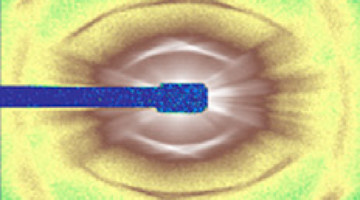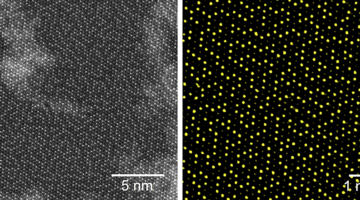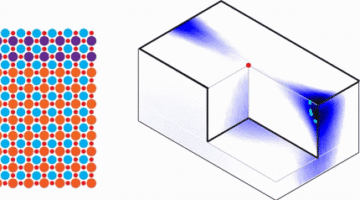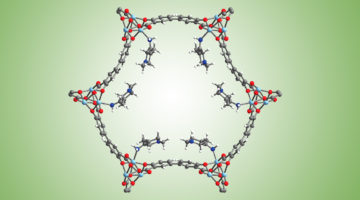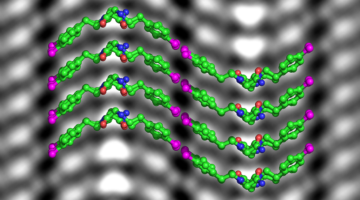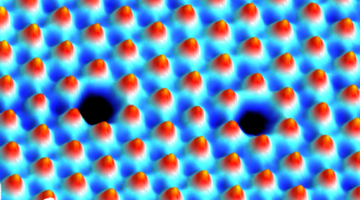In this work, researchers studied how CO2 gas modifies the chemical composition of lithium-metal surfaces. A better understanding of the interactions between lithium and surrounding gases will help design stabilization strategies and move from lithium-ion technology to high-energy-density technologies based on lithium metal. Read more »
From Stripes to Skyrmions in a Surprising Material
Researchers showed that tiny bubbles of ordered spins (skyrmions) can be induced to form in a material previously considered incompatible with skyrmion formation. The discovery opens up a new class of material systems that exhibit technologically desirable nanoscale features attractive for spintronic applications. Read more »![]()
![]()
The Flat Band in Magic-Angle Graphene Visualized
Researchers visualized flat band structures associated with exotic electronic phases in stacked graphene layers offset from each other by a “magic angle.” The work corroborates theoretical predictions and has significant implications for phenomena of technological and fundamental interest, such as topological phases and superconductivity. Read more »![]()
![]()
Toughening Mechanisms in Carp Scales at the Nanoscale
Scientists have characterized carp scales down to the nanoscale, using the ALS to watch how the fibers in the scales react as stress is applied. The resulting insights provide inspiration for the design of advanced synthetic structural materials with unprecedented toughness and penetration resistance. Read more »![]()
![]()
2D Electronics Get an Atomic Tuneup
Researchers demonstrated a promising avenue for controlling atomic ordering in semiconductor alloys by engineering frustrated interactions in a 2D transition metal dichalcogenide (TMD). The work could lead to improved semiconductor performance for next-generation electronics such as optoelectronics, thermoelectrics, and sensors. Read more »
Scientists Dive Deep Into Hidden World of Quantum States
Researchers discovered two unique electronic properties—a Van Hove singularity and Fermi surface topology—at the interface between atomically thin oxide materials. The results suggest that the system is an ideal platform for investigating how to control superconductivity at the atomic scale in 2D materials. Read more »
Off the Scales: Fish Armor Both Tough and Flexible
Humans have drawn technological inspiration from fish scales going back to ancient times: Romans, Egyptians, and other civilizations would dress their warriors in scale armor, providing both protection and mobility. Now, scientists have characterized carp scales down to the nanoscale, enabling them to understand how the material is resistant to penetration while retaining flexibility. Read more »
Water Improves Material’s Ability to Capture CO2
With the help of the ALS, researchers from UC Berkeley and ExxonMobil fine-tuned a material to capture CO2 in the presence of water. The parties have applied for a patent on the material, which was developed for use on the relatively humid flue gases emitted by certain natural gas power plants, a cleaner-burning alternative to coal. Read more »![]()
![]()
Freeze Frame: Scientists Capture Atomic-Scale Snapshots of Artificial Proteins
Protein-like molecules called polypeptoids have great promise as precision building blocks for creating a variety of designer nanomaterials. In this study, rsearchers used cryo-EM, a technique originally designed to image proteins in solution, as well as x-ray scattering techniques, to characterize the structure of polypeptide nanosheets. Read more »
The Beauty of Imperfections: Linking Atomic Defects to 2D Materials’ Electronic Properties
Two studies reveal surprising details on how some atomic defects emerge in transition metal dichalcogenides (TMDs), and how those defects shape the material’s electronic properties. The findings could provide a more platform for designing 2D materials for quantum information science and smaller, more powerful optoelectronics. Read more »
- « Previous Page
- 1
- …
- 3
- 4
- 5
- 6
- 7
- 8
- Next Page »



